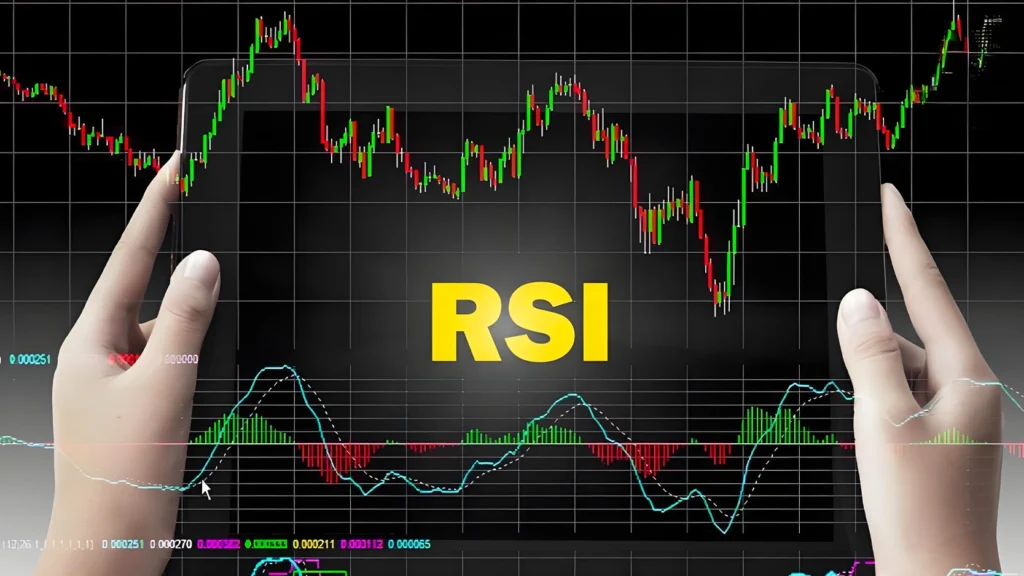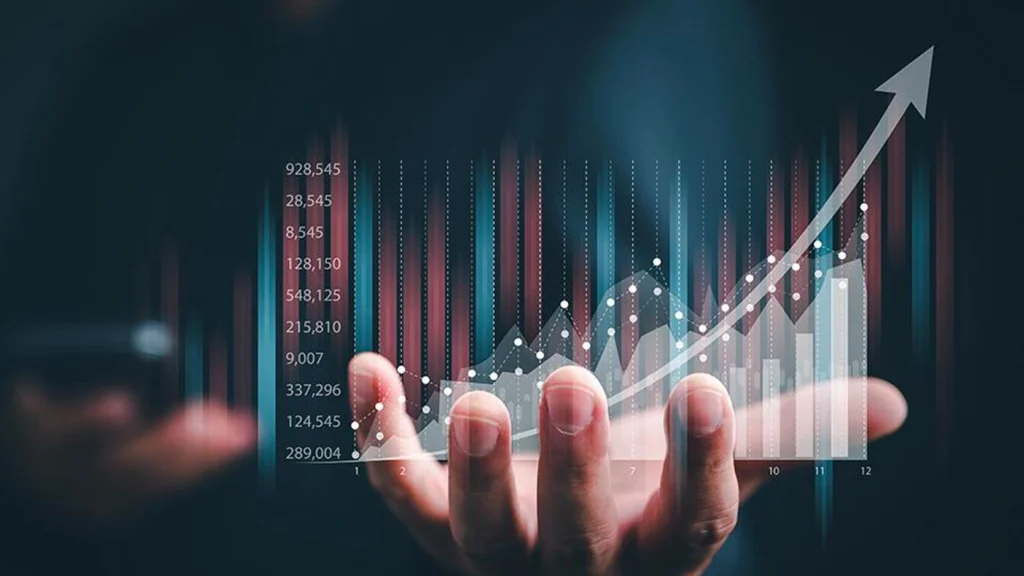What Is Trading Volume? Why Has It Become an Indispensable Market Barometer in Financial Transactions?
In the fast-paced world of financial markets, price movements tend to capture most of the attention. Yet, just like a detective following clues, focusing only on the footprints (price) while ignoring their depth and density can lead to missing critical information. That often-overlooked dimension is trading volume. More than just a series of bars beneath a chart, volume is the market’s most honest expression of collective sentiment, capital flow, and trend strength. Among the four pillars of technical analysis—price, volume, time, and space, volume holds a pivotal role. To understand volume is to learn the “language” of the market, revealing the true forces driving price fluctuations.
What Is Trading Volume? The Key to Understanding Market Activity
Before diving into how trading volume can be used to analyze market trends, it’s essential to build a clear and solid foundation. Let’s start with the most fundamental question: What exactly is trading volume? And how is it calculated and interpreted?
Basic Definition and Calculation of “Trading Volume”
Trading volume is a quantitative technical indicator that refers to the total number of units of a specific financial asset successfully traded within a given time period. Each completed trade requires both a buyer and a seller. It’s important to note that trading volume measures the total number of assets exchanged and not the total number of transactions. For example, if one buyer purchases 100 shares of stock, or a hundred buyers purchase 1 share each, both scenarios result in the same trading volume: 100 shares. In the stock market, trading volume is typically measured in terms of “shares” or “lots”.
This concept has broad applicability, not only is trading volume crucial in the stock market, but it is also widely used across nearly all major financial markets, including bonds, options, futures, commodities, and forex. On technical analysis charts, trading volume is typically displayed as a series of vertical bars beneath the main price chart (such as a K-Line Chart). This side-by-side format makes it significantly easier for traders to compare price movements with volume activity. The color of the volume bars usually corresponds to the direction of the price movement during that time period: if the closing price rises, the volume bar is often shown in red or green (depending on regional and platform conventions); if the price falls, it is displayed in a contrasting color.
Recommended Reading: What Are Candlesticks (K-Lines) and How to Read the Market’s Signals?
Why Is “Trading Volume” a Barometer of Liquidity and Market Sentiment?
Trading volume matters because it offers insight into three critical dimensions of the market: activity level, liquidity, and market sentiment.
First, trading volume is the most direct reflection of market activity. High volume typically indicates a highly active market, with many participants, frequent capital flow, and strong interest in the asset. In contrast, low volume suggests a quiet market with few participants, often signaling hesitation or indecision. It’s much like a physical marketplace, one bustling with crowds and lively transactions (high volume) suggests dynamism and opportunity, whereas a deserted, quiet market (low volume) reflects stagnation and fewer prospects.
Second, trading volume is a key indicator of market liquidity. Liquidity refers to the ability to buy or sell an asset quickly without significantly affecting its market price. High trading volume is typically associated with strong liquidity, meaning traders can execute transactions at prices close to the current market rate with relative ease, and orders are matched quickly. Conversely, assets with persistently low volume may carry significant liquidity risk—not only can wide bid-ask spreads increase trading costs, but in urgent situations, traders may also face the dilemma of having assets they want to sell but no market to absorb them.
Recommended Reading: What Are Liquidity and Volatility? How to Navigate Market Swings?
Finally, trading volume acts as a magnifying glass for market sentiment. When major news breaks, a company releases an unexpectedly strong earnings report, a central bank makes a surprise rate decision, or significant political events unfold, these factors often trigger sharp price movements. And almost without exception, such volatility is accompanied by a surge in trading volume. This is because new information or uncertainty disrupts the market’s previous equilibrium, prompting large numbers of traders to act on revised expectations. Whether driven by panic selling or enthusiasm over positive news, the collective emotional response is directly and vividly reflected in the spike in volume.
It’s important to note that a single data point of trading volume such as a stock trading 1 million shares today, carries limited meaning on its own. The true value of trading volume lies in its dynamic trend and how it compares to previous data and historical averages. Is volume expanding or shrinking? Is it surging at a price peak or steadily rising after a prolonged lull? These patterns reveal the evolving level of market participation. Therefore, traders should not view any individual volume bar in isolation, but rather as part of an ongoing market “documentary”. Each bar’s height tells a compelling story about market confidence, divergence, and consensus. Understanding the context of that story is the key to extracting deep insight from raw data.
How to Use “Trading Volume” to Discern the Strength or Illusion of Price Trends
Now that we’ve covered the fundamentals of trading volume, we can move on to its most essential application—analyzing its intricate relationship with price movements. This approach, known as price-volume analysis, is a cornerstone of technical analysis. It helps us determine whether a trend is genuine and sustainable or merely a fleeting illusion lacking real support.
Price-Volume Relationship: Four Basic Patterns for Confirming Trend Strength
In technical analysis, a widely recognized core principle states that “volume precedes price”. This axiom implies that volume changes often foreshadow or confirm future price movements. A healthy, sustainable trend, whether upward or downward, requires volume support for validation. Price movements lacking volume confirmation are inherently less reliable. Based on price-volume dynamics, four fundamental patterns emerge:
Pattern 1: Price Up, Volume Up
- Description: The asset price rises steadily, accompanied by a significant increase in trading volume.
- Market Interpretation: This is the strongest and healthiest signal of an upward trend. It clearly indicates robust buying pressure, with a steady influx of new capital willing to buy at higher prices. This reflects strong investor confidence in the market outlook and broad recognition of the uptrend. This ideal scenario of “rising price with rising volume” typically suggests the current rally is both genuine and sustainable, with further upside potential.
Pattern 2: Price Down, Volume Down
- Description: The asset price continues to decline, but trading volume does not increase, instead, it gradually shrinks.
- Market Interpretation: This is often seen as a positive sign that the downtrend is weakening or nearing its end. The declining volume indicates that selling pressure is easing and panic is subsiding. More importantly, it may suggest that holders are becoming reluctant to sell at current low prices which is a sign of “holding back” sentiment. As selling power fades, the downward momentum naturally slows, and the market may enter a bottoming or sideways consolidation phase, laying the groundwork for a potential trend reversal.
Pattern 3: Price Up, Volume Down – A Warning Signal
- Description: The asset price continues to rise, even reaching new short-term highs, but trading volume fails to keep pace and instead remains flat or declines.
- Market Interpretation: This is a potential warning sign that demands close attention, and is a classic example of “price-volume divergence“. It suggests that while prices are still climbing on the surface, the underlying momentum, namely buying strength, is beginning to weaken. The lack of strong volume indicates a diminishing willingness to buy at higher levels, and the rally may be driven more by market inertia or the actions of a limited number of participants. This pattern often signals that the uptrend may be losing steam and could soon stall, correct, or even reverse.
Pattern 4: Price Down, Volume Up – A Warning Signal
- Description: During a continued decline in asset price, trading volume doesn’t shrink, instead, it surges abnormally.
- Market Interpretation: This is another highly dangerous signal and a distinct form of “price-volume divergence”. It typically indicates a wave of panic-driven selling, with overwhelming sell pressure as large numbers of holders rush to exit at any cost. The spike in volume reflects deepening market disagreement and spreading fear, confirming the downtrend and potentially signaling that it may accelerate or persist longer. In this phase, bearish forces have clearly taken control.
To accurately interpret these price-volume relationships, especially during sharp volume shifts, it’s crucial to understand the underlying drivers. This is precisely why Cashback Island is committed to delivering timely updates on global financial intelligence; it is to help you connect observed price-volume anomalies with real-world economic data, company news, or market events, enabling more comprehensive and informed decision-making.
To aid understanding and retention, the following table provides a structured summary of these four core patterns. This quick-reference guide can serve as a “mental model” or shortcut when analyzing charts in the future, turning complex textual explanations into clear, structured insights. This greatly reduces cognitive load and enhances analytical efficiency.
Price-Volume Relationship Quadrant Quick Reference Table
| Price-Volume Pattern | Price Trend | Volume Trend | Market Interpretation |
| Healthy Uptrend | ▲ Up | ▲ Increasing | Trend is healthy; strong buying pressure. Uptrend likely to continue. |
| Weakening Downtrend | ▼ Down | ▼ Decreasing | Selling pressure is weakening; market stabilizing. Possible bottoming or consolidation. |
| Bearish Divergence | ▲ Up | ▼ Decreasing | Caution! Weak buying momentum; trend may stall or reverse. |
| Bearish Confirmation | ▼ Down | ▲ Increasing | Warning! Panic selling, heavy pressure. The downtrend may intensify. |
Volume-Price Divergence: A Warning Signal of Potential Market Reversal
Volume-Price Divergence is a highly significant concept in technical analysis. It refers to a clear mismatch or opposing movement between an asset’s price trend and its trading volume trend. This phenomenon reflects an imbalance in underlying market forces and is often seen as an early warning that the current trend may be weakening or about to reverse.
- Bearish Divergence: This typically occurs near the peak of an uptrend. Its defining feature is: while prices continue to reach new highs, trading volume fails to follow suit but remains flat or even trending downward. The underlying implication is that although momentum is still pushing prices upward, the core driving force—buying capital and willingness—is weakening. This signals a deterioration in trend strength and serves as a critical warning that a price peak may be imminent. This is precisely the “price up, volume down” pattern discussed earlier.
- Bullish Divergence: In contrast, bullish divergence usually appears near the end of a downtrend. It is characterized by prices continuing to make new lows, while trading volume does not spike in panic. Instead, it shrinks noticeably. Alternatively, while prices hit new lows, volume-based technical indicators may stop declining or even begin to turn upward. This suggests that although the price is still falling, selling pressure is significantly easing and bearish momentum is nearly exhausted. It is a potential signal that the trend may be bottoming out and ready to reverse.
It’s important to emphasize that volume-price divergence is a “warning signal”, not an “absolute trading command”. It indicates that a qualitative shift may be occurring in the current trend, but it does not guarantee an immediate reversal. In some cases, divergence may persist for some time before a true price reversal unfolds. Therefore, traders should treat it as a cue to stay alert and tighten risk management, while actively seeking confirmation from other analytical tools rather than making impulsive counter-trend trades based solely on divergence.
What Are the Advanced Tools for Trading Volume Analysis Beyond Basic Charts?
To more precisely quantify the impact of trading volume and extract deeper market insights, analysts have developed a range of technical indicators derived from volume data. The following introduces two advanced volume-based tools that are widely used in the market, especially favored by professional traders and institutional investors.
On-Balance Volume (OBV): A Cumulative Indicator of Buying and Selling Pressure
The On-Balance Volume indicator, commonly known as OBV, was first introduced in 1963 by the late American technical analysis legend Joe Granville in his influential book “Granville’s New Key to Stock Market Profits”. OBV is built on a forward-looking core belief: “Volume is the lifeblood of the market; price is merely the surface”. Granville strongly maintained that changes in volume often precede changes in price. Based on this philosophy, OBV uses a simple yet powerful method to connect trading volume with price movements, ultimately generating a continuous trend line that quantifies and visualizes the cumulative pressure from buyers and sellers in the market.
The logic behind OBV calculation is highly intuitive and straightforward. It begins with an arbitrarily chosen base value, then accumulates volume on a daily basis as follows:
- If the closing price is higher than the previous day’s closing price, it indicates that buying pressure is dominant, and the entire trading volume for the day is treated as a positive value, added to the previous OBV total. The formula is: OBV today = OBV yesterday + Volume today.
- If the closing price is lower than the previous day’s closing price, it indicates that selling pressure is dominant, and the day’s volume is treated as a negative value, subtracted from the previous OBV total. The formula is: OBV today = OBV yesterday – Volume today
- If the closing price is unchanged from the previous day, it indicates a balance between buying and selling pressure, and the OBV value remains the same.
In practical application, the absolute value of the OBV indicator carries little inherent meaning. The key lies in analyzing the direction and trend of the OBV line. Its primary uses include:
- Trend Confirmation: In a healthy trend, the OBV line should move in sync with the price trend. If the price is steadily rising, the OBV line should also be trending upward, confirming that the uptrend is supported by strong volume. Conversely, if the price is falling and the OBV line is also declining, this confirms the validity of the downtrend.
- Divergence Signals: Identifying divergence is one of OBV’s most important applications. When the price reaches a new high but the OBV line fails to do the same, a “bearish divergence” occurs which is a strong warning signal that bullish momentum is weakening and a trend reversal may be near. Conversely, when the price continues to hit new lows but the OBV line refuses to fall and instead begins rising, this forms a “bullish divergence”, often seen as a sign that selling pressure is exhausted and a potential bottom may be forming.
It’s important to note that due to the way OBV is calculated, a sudden surge in trading volume triggered by unexpected news or events can cause a disproportionate impact on the OBV line, potentially generating misleading signals. Therefore, OBV should be used in conjunction with other analytical methods to improve the accuracy of market judgments.
Volume-Weighted Average Price (VWAP): A Key Benchmark for Institutional Traders
The Volume-Weighted Average Price, or VWAP, is another highly powerful volume-based indicator. It calculates the average price of an asset weighted by trading volume over a specified period (typically within a single trading day). Unlike the familiar Simple Moving Average (SMA), which considers only price, VWAP gives greater weight to price levels with higher trading volume. As a result, VWAP is widely regarded by the market especially among institutional players as a more accurate reflection of an asset’s “true” or “fair” value during that period.
Recommended Reading: What Is a Moving Average and How Does It Reveal Market Trends?
The formula for calculating VWAP is: VWAP = ∑ (Typical Price × Volume) / ∑ Volume. Here, the “Typical Price” is usually calculated as the sum of the period’s (Highest price + Lowest price + Close price) divided by 3. One of VWAP’s core characteristics is that its calculation starts at the beginning of each trading day and resets at the close, making it a purely intraday indicator, mainly used for intraday analysis.
VWAP holds significant importance in the world of institutional investors (such as mutual funds, hedge funds, and pension funds). These institutions often use VWAP as a performance benchmark when executing large orders. Their goal is typically to buy at prices below the day’s VWAP or to sell at prices above it, thereby demonstrating execution efficiency. More importantly, by breaking up large orders into smaller lots and executing them in batches around the VWAP line, institutions can minimize the market impact of their trades. This helps them build or unwind positions smoothly without distorting the price.
Recommended Reading: What Is Hedging in Trading and How to Master the Art of Risk Management?
For retail traders, VWAP also holds significant practical value:
- Trend Identification: The most basic use of VWAP is to determine market direction. When an asset’s price consistently trades above the VWAP line, the market is generally considered to be in a bullish trend. Conversely, if the price remains below the VWAP line, it is seen as a bearish trend.
- Dynamic Support and Resistance: In a clearly trending market, the VWAP line often acts as a dynamic support level (during an uptrend) or a dynamic resistance level (during a downtrend). Prices that repeatedly bounce off or get rejected by the VWAP line offer traders potential reference points for decision-making.
From basic volume bar charts to OBV’s accumulation of buying and selling pressure, and further to the precise weighted pricing of VWAP, we can clearly observe the evolution of market analysis tools from “qualitative perception” to “quantitative precision”. Basic volume observation offers an intuitive, qualitative sense, traders may feel that “volume is high” or “volume is low”. The OBV indicator takes this perception a step further by quantifying it; discrete volume bars are accumulated into a continuous line, making trend and divergence analysis more systematic. However, OBV’s calculation still focuses primarily on directional pressure accumulation.
VWAP, on the other hand, elevates quantitative analysis to a more sophisticated level. It not only considers trading volume but integrates it as a weighting factor in price calculation, answering a deeper question: “At which price levels is trading activity most concentrated?” This provides a reference point for “fair value” based on actual market activity. Not long ago, indicators like VWAP were exclusive tools reserved for institutional traders.
Conclusion: The Value and Considerations of “Trading Volume” Analysis in Trading
Trading volume is far from a dispensable subplot on a chart, it is a core tool for interpreting market depth, validating price action, and assessing the health of a trend. It breathes life and emotion into cold price data, revealing the dynamic story written by countless market participants acting with power and conviction.
Mastering volume analysis is an essential milestone for any serious trader transitioning from novice to professional. There are no shortcuts on this path. It demands continuous learning, patient observation, and extensive hands-on experience in the market. At Cashback Island, we are committed to being your most reliable partner on this journey. Through industry-leading trading rebate services, we help reduce the hard costs of every trade. More importantly, we continuously deliver in-depth educational content like this article, professional-grade analytical tools, and timely market intelligence, comprehensively supporting you in building a robust and systematic trading knowledge base. This is because we believe that in today’s highly competitive financial markets, the true and sustainable trading edge lies in two pillars which are effective cost savings and deep, accumulated expertise.
Cashback Island continuously updates its forex trading education resources. Traders can visit the “Cashback Island Education Guide” section to learn about liquidity management, volatility strategies, and rebate optimization techniques.
Frequently Asked Questions
Q1. What Exactly Is Trading Volume?
Trading volume is the “thermometer of market buying and selling pressure”. Simply put, it measures how many shares or contracts have changed hands over a specific period.
Q2. Is Volume Analysis Suitable for All Types of Traders?
Whether you’re a short-term trader or a long-term investor, volume analysis offers three universally valuable functions: validating breakouts, identifying liquidity risks, and assessing market sentiment.
“Forex trading involves high risk and may result in capital loss. The content of this article is for informational purposes only and does not constitute investment advice. Please make decisions cautiously based on your personal financial situation. Cashback Island assumes no responsibility for any trading-related outcomes”.
Related articles
-
In the realm of modern financial market analysis, whether it’s the fast-changing forex market, the highly volatile cryptocurrency space, or traditional stock indices, technical analysis plays an indispensable role. Among the many technical indicators, the Relative Strength Index (RSI) is undoubtedly one of the most classic and widely used tools....2025 年 9 月 4 日
-
In today's environment of persistently low interest rates combined with inflationary pressures, simply depositing money in the bank is no longer sufficient to preserve the future value of your assets. An increasing number of investors are seeking more proactive ways to grow their wealth, shifting from traditional savers to active...2025 年 8 月 13 日
-
In financial market terminology, “bottom-fishing” is a highly enticing yet challenging concept. It refers to an investment strategy aimed at buying assets that have undergone significant price declines and are believed to be undervalued, with the expectation that their prices will eventually rebound sharply. This strategy embodies the ultimate expression...2025 年 8 月 13 日













